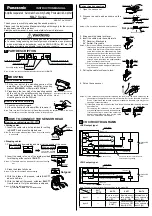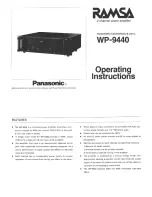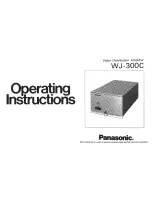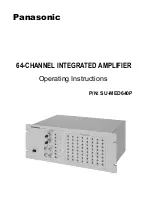
26
the large number of op-amps types offered, it is possible to pick an optimum
type for any specific application.
Why does PRE-GAIN make sense ?
Two extreme examples (with the HPA V280 at 8dB gain, volume control set to
full cw):
1st example:
The (pre-)amplifier provides 4V output voltage, whereas the headphone requires
only 2V for 100dB sound pressure level.
With the control fully turned up, the V280 would deliver 10V output at 8dB gain.
Therefore the volume control would have to be operated very carefully in order
to avoid hearing damage. Moreover, any interference at the input should be
avoided since it would be "unforgivingly" amplified as well. With PRE-GAIN, the
input level can be reduced by 12dB (a fourth), with 1V instead of 4V as the
result. This 1V is again amplified by 2.5, then equalling 2.5V. Now the volume
control can be turned over almost the entire range.
2nd example::
The (pre-)amplifier provides 1V, whereas the headphone requires 20V to
release 100dB of sound pressure.
With the volume control fully clockwise, the V280 would provide 2.5V at 8dB
gain only - much to low for the headphone. By means of PRE-GAIN, input level
can be boosted by 12dB (four times), resulting in effective 4V. These are again
multiplied by 2.5, now equalling 10V. This is still not enough, but far closer to the
optimum value: The headphone achieves 114dB sound pressure level.
Why does frequency bandwidth limiting make sense ?
In signal processing, sound is represented by AC voltages. Sound is audible -
for young people - from about 20 to 20000 Hz. The elder the listener, the less he
will hear high frequencies in particular.
In order to transmit these frequencies at optimum quality, the frequency
response of an amplifier should be as wide and as "flat" as possible. At the low
end of the scale, this limit is represented by DC, as there is no frequency lower
than zero. In upward direction, the limit can be set to practically any frequency,
but the higher, the more susceptible the device becomes concerning electro-
magnetic interference. This is not audible in the first place, but may interfere
with the useful signal and then become evident. Therefore, unrestricted









































